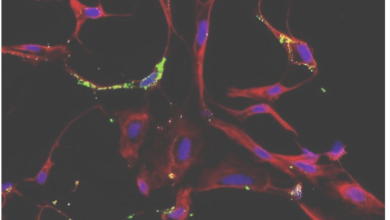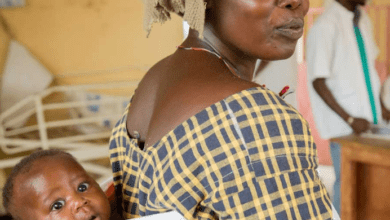Diabetes 101: Types, Signs, and Symptoms

According to WHO, there are about 422 million people worldwide who have diabetes. The majority of these cases are widespread among low and middle-income countries, and there are about 1.6 million deaths directly attributed to diabetes each year.
Due to the steadily increasing number of cases of diabetes and its prevalent effects it has on our community, it’s posing an urgency to put the malady to utmost priority. Moreover, many are having trouble affording prescription drugs for this disease, often opting for coupons, such as BuzzRx’s discount ones, to afford their medication.
With the numbers rising unrelentingly worldwide and the statistics speaking for themselves, it is high time that diabetes is given serious attention and people around the world become aware of it’s varying types, signs, and symptoms.
Table of Contents
The Category Talk: Types of Diabetes
There are three main types of diabetes: Type 1, Type 2, and Gestational diabetes.
Type 1 Diabetes
Type 1 Diabetes transpires when the immune system attacks and destroys the pancreas’ cells (beta cells) that make insulin. This type of diabetes could fall upon an individual at any age but is observed frequently in children and adolescents.
When a person possesses type 1 diabetes, the body produces a minimal amount of insulin, which means that one should have a daily dose of insulin injections to maintain blood glucose levels under control. The precise reason for type 1 diabetes isn’t known yet, but medical practitioners think genes or environmental factors could be accountable.
Type 2 Diabetes
Type 2 Diabetes can be caused by gene inheritance and lifestyle behaviors, such as being overweight and not getting sufficient physical activity. This type of diabetes is typically detected in adults and is the most common type with a 90% share in overall diabetes cases.
With type 2 diabetes, the body does not make good usage of the insulin it produces. A majority of individuals with type 2 diabetes entail intake of oral drugs and/or insulin to retain their blood glucose levels regulated.
Gestational Diabetes
Gestational Diabetes (GDM) is a category of diabetes that involves high blood glucose throughout pregnancy, linked to complications for both mother and child. Having Gestational Diabetes may result in preterm labor and other maternal difficulties.
GDM generally disappears after pregnancy. However, women affected and their children are at amplified danger of possessing type 2 diabetes later in life.
Listening to Signs: Early Signs and Symptoms of Diabetes
How can you assess if you have early signs of diabetes? The majority of the primary indicators are from higher-than-normal levels of glucose in the body.
With diabetes, the cautionary signs can be so insignificant that you don’t precisely notice them, which is remarkably accurate for type 2 diabetes. Many people don’t discover that they have it until long-term impairment caused by the disease is observed.
Early Signs of Diabetes
- Fatigue and Hunger. The body translates the food you consume into glucose that the cells utilize for energy. However, your cells require insulin to use up glucose. Suppose your body does not produce any or not enough insulin at all, or it so happened that your cells resist the insulin your body produces.
In that case, the glucose can’t get into them, which significantly results in you having no energy. As a result, this can make you hungrier and more exhausted than usual.
- Peeing more often. An average individual frequently has to pee for about 4-7 periods in 24 hours. On the other hand, individuals who have diabetes may have so much more. This happens because the body reabsorbs glucose as it goes through the kidneys.
However, because diabetes thrusts your blood sugar higher, the kidneys may not be able to carry it all back. This grounds the body to make more urine. The outcome: You’ll have to go to the bathroom more often and pee out more.
- Dry mouth. Since your body is utilizing and consuming so many fluids to produce urine, there is less moisture for other body parts. You possibly will get dehydrated, and your mouth could sense parched.
- Obfuscate vision. Altering fluid points in the body can result in eye swelling. This changes the eye’s shape and concentration.
Different Symptoms of Diabetes
Type 1 Diabetes
- Unintended weight loss. When the body couldn’t grow energy from the food consumed, it will eventually consume muscle and fat for energy. An individual may lose weight despite unchanged eating patterns.
- Vomiting and Nausea. If the body turns to burn fat, it produces ketones. These eventually build up in the blood to dangerous levels, which could result in diabetic ketoacidosis. Ketones make you feel bizarre in the stomach.
Type 2 Diabetes
- Yeast infections. Men and women who possess diabetes can contract these. Yeast depends on glucose, and so having plenty of it makes it flourish.
- Slow-healing sores or cuts. Over time, increased blood sugar can alter your blood movement and cause nerve damage, making it difficult for your body to restore wounds.
- Pain or numbness in the leg. This is an outcome of nerve damage.
Gestational Diabetes
- Typically, high blood sugar during pregnancy has no indications. However, a person might feel much thirstier than usual or have to go to the bathroom more often.
Final Thoughts
Diabetes care continues to be a challenge to health care practitioners worldwide as people around the world endures to portend a substantial increase in illness pervasiveness over the subsequent few years. It now falls upon the hands of humanity across the globe to be informed and knowledgeable about these topics to minimize and mitigate Diabetes’ adverse and harmful impacts.






